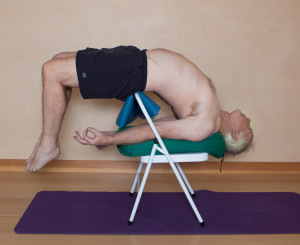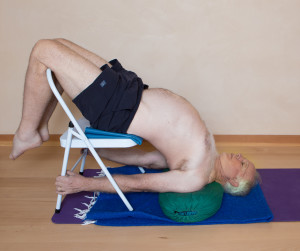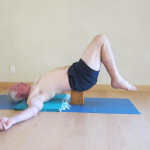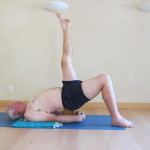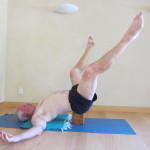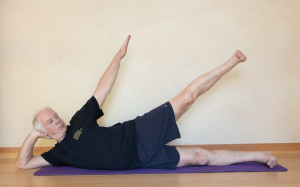Dense and Subtle Energy or Embodying Evolutionary Spirituality
Notes From Detroit, January , 2017
Love and Compassion
The fundamental essence of Being is Love. Unmanifest Love is infinite awareness, vast stillness, silent, pregnant with possibility, unimaginably mysterious. In the world of form, Love manifests as cosmic harmony, the balance of complementary possibilities in a dynamic tension that drives the evolutionary journey. The multitude of forms that comprise 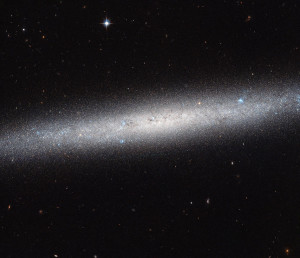 the known universe are evolving, from quarks and atoms, to stars and galaxies, to deeper and deeper expressions of complexity like butterflies, rain forests and Lady Gaga. In the ‘Wholeness’ of this process, manifest and unmanifest, there is no ‘other’, no separation. The terms ‘non-dual’ or ‘advaita’ refer to this oneness, and we must continue to ‘realize’ or ‘recognize this.
the known universe are evolving, from quarks and atoms, to stars and galaxies, to deeper and deeper expressions of complexity like butterflies, rain forests and Lady Gaga. In the ‘Wholeness’ of this process, manifest and unmanifest, there is no ‘other’, no separation. The terms ‘non-dual’ or ‘advaita’ refer to this oneness, and we must continue to ‘realize’ or ‘recognize this.
When the balance is disturbed in manifest reality, the powerful energy of love seeks to restore harmony in the system and keep the evolutionary journey moving forward into deeper and more prolific expressions of itself. (See ‘The Universe Story” by Thomas Berry and Brain Swimme to see how evolution unfolds.) This process, however, becomes very complicated in the realm of human thought and activity. Because of the nature of our survival based nervous system, it is easy for the energy of love to become distorted when disharmony sets in. Here, creativity becomes stifled, chaos and stagnation, fear and anger ensue and the evolutionary journey stalls.
Rather than remaining in wholeness/love, we create ‘other’ to blame for the inevitable challenges that arise in evolutionary progress. Our own ego structures may turn on each other (I’m such a terrible person, etc), stifling pour own growth. Or we find individuals or groups to demonize collectively. We may be wise or clever enough to recognize when some of the cultural disharmony is arising, but if we do this from a place of fear and anger, more conflict is assured and the problems become more deeply entrenched in the cultural field. When disharmony is recognized from a place of love, creativity can begin the process of self healing. Adyashanti is calling this ‘Fierce Love’.
Is it possible to be fiercely for love, compassion, truth, equality and justice without becoming lost in anger or depression? Is it possible to recognize and speak out strongly for what we believe in, rather than expending energy for what we are against? Resisting comes from a sense of separation and thus can never provide a long term solution to any problem. Gandhi was not resisting the British. He was fiercely standing for satya, truth, and would not be moved from that because he had the whole cosmos with him. Is it possible to recognize the others may be operating from delusion they do not see or understand and feel compassion, meaning your heart stays open, even as you strongly disagree with specific policies and actions? These are not easy practices, which is why we have to practice….. a lot.
The great challenge of our time is to recognize that anger, fear, frustration and depression are the deeply embedded roots of the problems we are facing. This is true both individually and collectively. “We cannot solve our problems with the same thinking that created them” observed Albert Einstein. We can also say that we cannot solve our current global challenges without changing the fear and anger based emotionally dysfunctional mind states, both personal and collective, that dominate social dialogue on all sides. That is why spiritual transformation is the foundation for healthy sociological, economic and political change.
Facilitating this spiritual transformation, ‘Awakening’, is why we have incarnated in the present moment. ‘Incarnation’ is the here and now of spirit and soul emerging moment to moment as you, as a flesh and blood human being, awakening to its divine origins, healing its shadows and wounds, and pouring creativity into the local fields of the planet. Yoga practice is an all in commitment to fully incarnate and actualize all that your soul is capable of. To do this we need the ability to discriminate between what I am calling dense and subtle energy. To be as simple as possible, dense energy is dominated by the shadow and fear, subtle energy comes from love and cosmic harmony. In the modern yoga world, the shadow work is the most important and least recognized realm for this work.
As spiritual practice takes us deeper into the Awakening, we continually discover the layers of our shadow in the form of grief, darkness and despair that have accumulated over time. We are all experiencing, to one degree or another, anger, frustration, anxiety, fear and depression. No surprise given the insane way in which humans are treating each other and the planet. And it is obvious that there is a personal as well as a collective component to the darkness. Managing these less than pleasant domains is essential if we are to make positive contributions to the awakening.
As an ‘Spiritual Evolutionary’ my practice involves discovering and activating the resources available from as many layers and levels of creation as possible to help move forward the collective spiritual awakening and healing desperately needed by our planet. As a somatic practitioner as well, I find that in exploring ‘incarnation’, the innate and emergent intelligence of life that is the core of my being, I can discover the primary evolutionary urges and desires of the cosmos. As a ‘Soul Man’, I also recognize the need to do the personal and collective ‘shadow work’ to transform and heal the repressed psychic wounds that bind up or misuse the energy needed for healing and growth. Both the Yogis of India and the Tao’ists of China have explored and mapped this journey of awakening and transformation for us.
The Taoists and the Yogis have slightly different ways of expressing cosmic harmony and each is helpful to our understanding of the cosmic healing process we are nurturing. In Taoism, the universe is composed of two complementary forces, Yin and Yang, that when in balance, create and sustain a healthy universe. The Taoists noticed the difference between the north and south sides of the mountains. Being in the northern hemisphere, the north face was cooler, damper, darker; the south was warmer, drier and sunnier. This was the primal origin of yin and yang which eventually expanded to include the cycles and qualities of night and day, winter and summer and so forth.
The Yogis describe two fundamental tendencies and add a third term to describe the dynamic state of balance between them. These three are the ‘gunas’, a key aspect of Samkhya philosophy. Tamas is urge for stability, Rajas is the urge for change and Sattva is urge for a dynamic and creative balance between these two. Traditional discussions on the gunas refer to tamas and rajas as unhealthy and sattva as desirable, but I find this to be misleading. It makes much more sense to see that the sattvic state is a balance of tamas and rajas. Patanjali comes right out and says in II – 46, ‘sthira sukham asanam’, incarnation is the balance of stability and mobility. If they are out of balance, problems arise.
Dense and Subtle Energy
All spiritual practices begin in, and continually refer back to the heart as the heart is the center of all center, the ground of being, the root of the soul. In Sutra I-33, Patanjali offers clear guidance on living from the heart and healing the shadow issues. These practices of the heart, the Brahma Viharas or the ‘Four Unmeasurables’ are very important in the Buddhist teachings as well.
I-33 Maitri karuna mudita upekshanam sukha dukha punya apunya vishayanam bhavanatash citta prasadanam.
(The mind becomes purified by cultivating) love, compassion, joy, and equanimity (respectively) towards those who are successful, suffering, virtuous and not so virtuous.
Love, or metta, loving kindness as the Buddhists call it, refers to the sincere desire to see all beings up-lifted, loved, supported, and nurtured so they may also feel and live from the infinite depths of their own hearts. Is it easy to feel this deeply towards all beings? No, not at all. We all experience jealousy, anger and resentment towards certain people and situations, and have no problem directing negative energy at ourselves. These dense energy mind states obscure the pure light of the heart. It takes practice to over-ride our habits and transform the energy.
Now, it is important to note that we can strongly criticize wrong action and stand up to injustice while still holding the person or persons responsible in the light of love. This is called ‘parenting’. The natural energy of the heart is love, so this is a difficult but ultimately a straight forward practice. Can I truly feel love toward those who disagree with me, even if I know I am convinced that I am right and they are wrong. And can I truly listen to those who appear to me to be ‘wrong’, from openness and compassion, and hold the possibility that I may be lacking in perspective or information. Like is any other strength building exercise, start with simple challenges and work your way up. Very dense energy is very resistant to change, so we need patience and subtlety to work at this level.
The basic metta practice is a simple, three phrase mantra you can repeat any time: May all beings be happy, May all beings find inner peace, may all beings be free. When you feel ready, you can be more specific in your intentions: may all politicians be happy, may all politicians find inner peace, may all politicians be free. Feel free to add your more challenging names as your practice grows, including yourself.
Compassion is a more subtle and challenging, as it requires us to have love plus discriminating wisdom. Compassion implies deeply feeling the nature of someone’s suffering and attempting to discern what actions might possibly help alleviate this suffering. This is not pity or condescension but a heart to heart connection at the soul level. Deciding a choice of action, if there is one, is where the wisdom comes in. Dense energy is afraid of feeling someone else’s pain, because it has enough of its own to deal with, and isn’t even conscious of this. Feeling compassion toward those who are creating suffering for others is quite challenging and requires the capacity to feel the suffering that underlies their actions. There are many times when compassion calls for letting the person learn their own soul lesson by not interceding. Start slowly, and gradually expand your capacity to be compassionate. Take this at your own pace. This is not a rush to saint hood!
Being joyful when in difficult times, or in a difficult situation, is also quite challenging, so we have to practice finding joy wherever we can. Gratitude practice is a good one. There is so much to be grateful/joyous for, and yet the mind quickly and easily gravitates to negativity. The song of a bird, a flower blooming, snowflakes; Mother Nature is fundamentally an ongoing outburst of joyous activity, but for many, their world is contained in electronic devices and the spontaneous joy of being has been forgotten. Cultivate joy as often as possible, so you can access it when needed. Give yourself a vast reserve to draw from.
Equanimity (Patanjali uses the Sanskrit work ‘upeksha’ ) is a lovely word. The Bhagavad Gita calls this ‘samatvam’ and uses this as a primary definition of yoga. This is a crucial practice when working with deep shadows, both personally and collectively and is subtle energy in action. A recent excursion in the medical world has given me ample opportunity to explore this practice of ‘non-attachment’. Pema Chodron’s teachings on ‘Discomfort Resilience has been most helpful here.
Chapter 2, verse 48
yogasthah kuru karmaani sangam tyaktvaa dhananjaya
siddhyasiddhyoh samo bhuutvaa samatvam yoga ucyate
Remaining steadfast in yoga, oh Dhananjaya (Arjuna), perform actions, abandoning attachment, remaining the same to success and failure alike. This evenness of mind is called yoga.
The next time a challenging situation arises in your life, explore samatvam, equanimity, even as other aspects of the mind run around in their own patterns of fear and anxiety. The feelings will remain highly unpleasant, but the space in which you hold them will be vast and supportive, and even light and joyful in odd moments. A recent excursion into the medical world has given me a wonderful opportunity to put all this to practice. Pema Chodron’s teachings on ‘Discomfort Resilience’ has been most helpful here.
Working with Dense and Subtle Energy in Asana Practice
From an asana perspective, dense energy arises in the body when overworking, collapsing or some combination of the two. Remember we have structure, energy flow, and fields to work with in the realm of form or Prakriti, as well as ‘infinte spaciousness or Purusha. We will explore how gravity, (the field) healthy alignment (structure) and the capacity to feel the subtle aspects of the breathing (energy) combine to create energy flow connecting structure and field in a way that can heal, awaken and transform. To get the most form this, and to save me from repeating, you will be sent to other pages on the web site for the foundation work. Then return to this post.
Standing Poses: click here: Standing Poses
 In all of these poses, begin with K-1, the Kidney 1 acupuncture point. Activate by pressing down through the point, which will raise you up a bit. Differentiate this action from lifting the heels, which uses the superficial calf and not the deeper muscles of the foot. The correct action grounds and lifts simultaneously, with no tightening. There will be fatigue if these new muscles are not used to working, but that should be in the feet and not the outer calf.
In all of these poses, begin with K-1, the Kidney 1 acupuncture point. Activate by pressing down through the point, which will raise you up a bit. Differentiate this action from lifting the heels, which uses the superficial calf and not the deeper muscles of the foot. The correct action grounds and lifts simultaneously, with no tightening. There will be fatigue if these new muscles are not used to working, but that should be in the feet and not the outer calf.
Next, connect this feeling of lift to the very center of the perineum and feel the springiness and elasticity in the tissue here. It should be neither too loose nor too tight, but shtira and sukham.
Now find the tip of the coccyx, just behind the center point and send a line of energy from it, forward, over the pubic bone and up to the base of the sternum. Return the flow from sternum to coccyx and repeat until you feel a stable and dynamic connection between them. This is not a ‘gross tucking’ action, but will create space, length and support to the whole lower body. This line tends to be very weak and leads to overworking the lower back muscles (rajasic dense energy) and weakness in the abdominal wall (tamasic dense energy.) Connect to feet and walk around without losing the connection.
Now, find the point behind your heart that sits above the center of the perineum and connect it to the two K-1 points. Let the breath flow freely without disturbing the energy flow and field connecting the points. Feel the heart floating in the chest, supported by feet and the coccyx-sternum energy line.
Now connect feet, perineum and back of the heart to your crown chakra, releasing up into the heavens as you also release down into the earth. Click here for more: Find the balance of weight and lightness and feel its quality.
 Imagine one more point, on the spine between the shoulder blades at the level of the heart. Connect it in a loop up to the crown chakra, down to the mid sternum, around to the perineum and back up to the inner shoulder blades. Change direction. You may find some other points along the circuit that carry energy. This is a Tao’ist path known as the micro-cosmic orbit.
Imagine one more point, on the spine between the shoulder blades at the level of the heart. Connect it in a loop up to the crown chakra, down to the mid sternum, around to the perineum and back up to the inner shoulder blades. Change direction. You may find some other points along the circuit that carry energy. This is a Tao’ist path known as the micro-cosmic orbit.
Sustain this circuit in all poses, as best possible. When you feel contraction or collapse, reconnect the points and re-establishing the energy flow and field.
Dog Pose and Variations: click here Dog Pose
Femur action in fwd bends: chair work:
You have dig even more deeply for this one, but there is an article from the Yoga Journal that covers the work we did in class in much more detail. When you click here (published articles) it will take you to the page containing all the articles I wrote many years ago. It is a fun page if you have not discovered it before. Scroll down to “Froggie Yoga, from the May/June 1989 issue and click there. You get the whole magazine. The ‘hip action’ article begins on page 60 with my dear wife Kate as a relaxing frog. Amazingly enough, and I just discovered this, there is an article on Chi Gong right before mine. I love cosmic simultaniety!
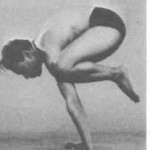 More challenging poses from the folded groin work begin with Bakasana and its variations. Keep the groin depth and expand the chest in all directions,
More challenging poses from the folded groin work begin with Bakasana and its variations. Keep the groin depth and expand the chest in all directions,
especially out through the arms.
for opening the deep front, organs, muscles, connective tissue, breath, without contracting the back.
Setu Bandha and variations on a block.
Anantasana for opening lateral line: trace from inner heels to inner ears.
Practice and Teaching a Somatic Based Spirituality
- Always begin, and return over and over to the heart center, nurturing and strengthening all the ways in which love can manifest: Compassion, Mercy, Gratitude, Selfless Action, Charity etc.
- Open channels through heart center into: Mother Earth for stability and grounded strength; Father Sky for spaciousness, lightness and openness. Know the heart as where heaven earth and you are one.
- Feel breathing as expanding and condensing, like the Hoberman sphere.
- Learn how to stand and walk from the integration of 1, 2 and 3 above.
- Learn how to use standing poses to refine 1 – 4 above.
- Awaken and discover the ‘median plane’ of the body, dividing front and back, by expanding core channel sideways. (see anantasa above).
- Learn how mammalian flexion/extension (fwd and back bending actions) can open up 6.
- Find twisting poses as spiraling patterns radiating out from median line/plane. (7)
- In dog pose, awaken arms as weight bearing limbs, as preparation for inversions.
- Learn inversions carefully, mindfully.
- Learn to sit in stillness, not by relentlessly seeking perfect alignment, but allowing the body to discover its own innate stillness.
- Learn to lie down in a supported savasana.



